calsfoundation@cals.org
Lake Lucerne
Lake Lucerne is an artificial lake about a mile and a half south of Eureka Springs (Carroll County). The story of Lake Lucerne begins with Mountain Lake Dam, which was a log-constructed dam built in 1884. Next, the site was called Silver Lake, where the locals swam, and then Sanitarium Lake, Crystal Lake, Spring Lake, and, finally, Lake Lucerne, which became the Lake Lucerne Resort.
Dr. Charles E. Davis was a Chicago physician who was born in 1844 and came to Eureka Springs in 1881 because of his wife’s illness. Each time they went there, she would improve, and when they went back to Chicago, her troubles returned. By 1883, he was in residence in Eureka Springs with an office by Crescent Spring.
He and his associates formed the Sanitarium Company of Eureka Springs and set about creating Sanitarium Lake in 1892. After Sanitarium Lake was completed, Davis changed the name to “Crystal Lake,” after his daughter Chrystal Davis.
In 1920, when Davis’s wife died, he sold the property, which he had renamed Spring Lake, to Richard Ryan Thompson, who was then president of Crescent College. Thompson had borrowed money for the purchase with the assistance of his friend and attorney Claude Fuller. Thompson then changed the name to Lake Lucerne before the mid-1920s and began building a resort there. It eventually had about twenty-five family cottages, a dining hall, seventeen rooms in the sleeping lodge upstairs from the dining hall, a nine-hole golf course, a two-story dance pavilion and amusement hall, badminton courts, tennis courts, saddle horses, a large swimming area (which was part of the lake), and an airport south across the lake from the cottages.
When Thompson began losing his eyesight, he sold the Lake Lucerne property in April 1965 to resort developers Lewis Jim Johnson, Lance Alworth (a former football star at the University of Arkansas), and Carl S. Rosenbaum, all of Little Rock (Pulaski County).
The resort failed under these owners, and it ended up in the hands of Arkansas Resort Company, Inc., with Bob Pitts as president. Pitts made grand promises to investors and said he would add another lake of approximately 100 acres to expand boating and water-skiing activities; in addition, the golf course would go from nine holes to eighteen, and Lake Lucerne would stock rainbow trout and would have snow skiing ready for the 1969–70 season, with a ski lodge atop the highest mountain overlooking the entire ski area. No development actually came to pass, probably due to lack of funding, and John F. Cross was appointed by the court as receiver.
The next venture was the Biblical Noah’s Ark at this 451-acre resort, and brochures were circulated for it. However, no development transpired, and, again, Cross was appointed receiver, with foreclosure on July 27, 1976. This time, an investor from Harrison (Boone County), C. A. Dawson, bought the property, and stability returned to Lake Lucerne. Resort buildings were torn down, part of the property was traded to the new Eureka Springs Grade School and High School, and the remainder was sold separately to be used as residential properties surrounding the lake.
For additional information:
Pinkley-Call, Cora. Stair-Step-Town: A Background History of the Famous Northwest Arkansas Town That Climbs the Hills. Eureka Springs, AR: Times-Echo Press, 1952.
Westphal, June, and Kate Cooper. Eureka Springs: City of Healing Waters. Charleston, SC: History Press, 2012.
Zeller, Joyce. The Hidden History of Eureka Springs. Charleston, SC: History Press, 2011.
John Fuller Cross
Eureka Springs, Arkansas
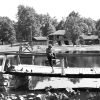 Recreation and Sports
Recreation and Sports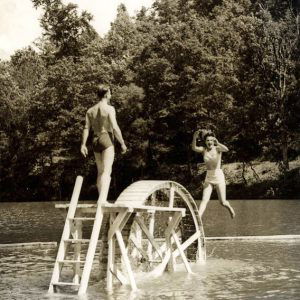 Lake Lucerne
Lake Lucerne 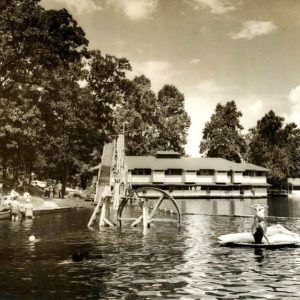 Lake Lucerne
Lake Lucerne  Lake Lucerne Ad
Lake Lucerne Ad 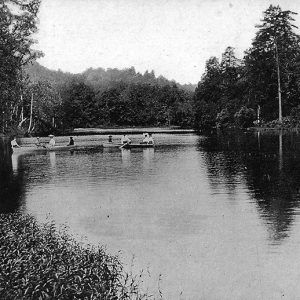 Lake Lucerne as Sanitarium Lake
Lake Lucerne as Sanitarium Lake 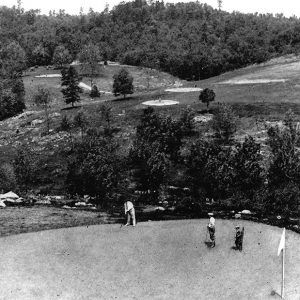 Lake Lucerne Golf
Lake Lucerne Golf 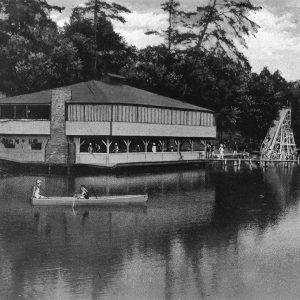 Lake Lucerne Swimming
Lake Lucerne Swimming 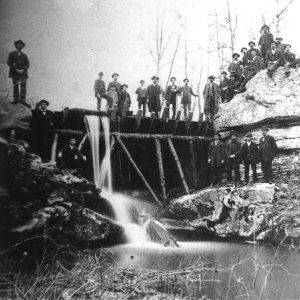 Mountain Lake Dam
Mountain Lake Dam 



Comments
No comments on this entry yet.